Brake Caliper Replacement Bendix
Removal Procedure
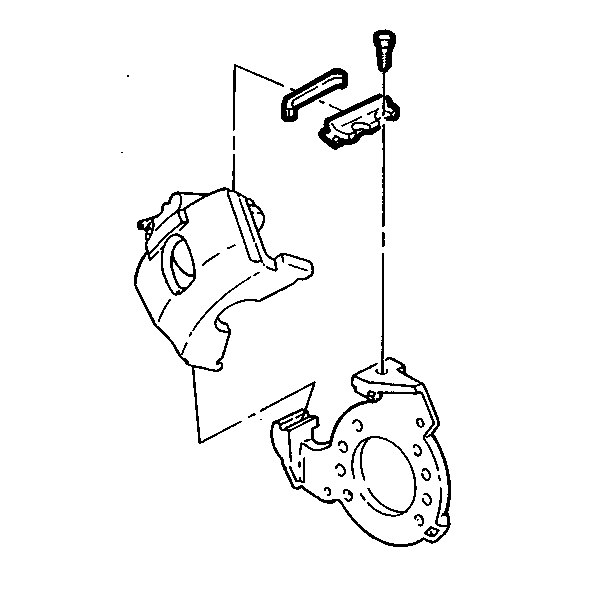
- Disconnect the negative battery cable.
Refer to
Caution: Unless directed otherwise, the ignition and start switch must be in the OFF or LOCK position, and all electrical loads must be OFF before servicing
any electrical component. Disconnect the negative battery cable to prevent an electrical spark should a tool or equipment come in contact with an exposed electrical terminal. Failure to follow these precautions may result in personal injury and/or damage to
the vehicle or its components.
in General Information.
- Drain about 2/3 of the brake fluid from the reservoir.
- Raise the vehicle. Support the vehicle with safety stands.
- Remove the tires and the wheels. Refer to Wheel Removal and Tire
Mounting and Dismounting in Tires and Wheels
- Remove the key retaining bolt.
- Remove the key and the spring using a brass punch.
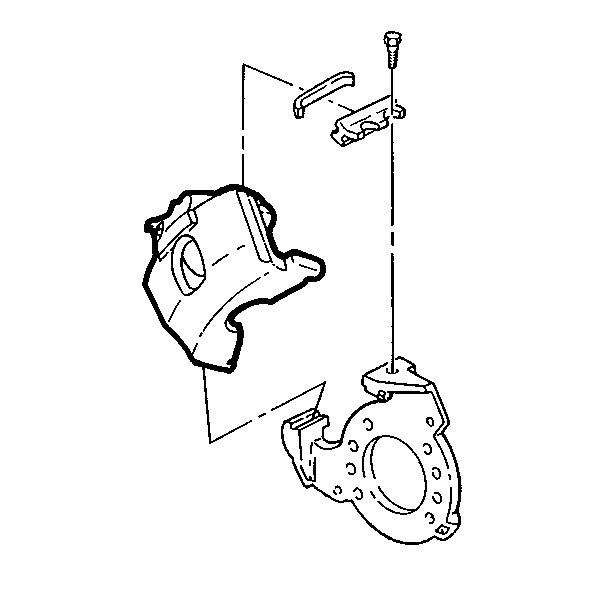
- Compress the caliper pistons.
| 7.1. | Use a C-clamp between the inner caliper housing and the outer
lining or use a screwdriver in order to pry between the outer caliper housing
and the outer lining. |
| 7.2. | Watch for possible fluid overflow at the reservoir during this
step. |
| 7.3. | The inner lining may stay on the anchor plate (Bendix brake) (front
disc brakes). |
- Disconnect the brake hose
| 8.1. | Clean the area around the hose on the caliper. |
| 8.2. | Cap or tape the fitting in order to prevent dirt from entering
the brake hose. |
Inspection Procedure

- Inspect the inside of the caliper for
hydraulic fluid leaks. Overhaul the caliper if leaks are found.
- Inspect the piston seal for leaks and fluid around the boot, the
shield, and the inboard lining.
- Inspect the piston dust boots for burns, tears, or other damage.
Overhaul the caliper if damage is found.
- Inspect the guideway surfaces on the caliper and the anchor plate.
- Inspect the dust shields. Replace the shields if they are loose.
- Inspect under the boots for leakage. Overhaul the caliper if leakage
is present.
Installation Procedure

- Compress the caliper piston to the bottom
of the bores.
| 1.1. | If the piston cannot be pushed by hand, place a small block of
wood over the pistons and boots. Use a C-clamp around the wood block and the
caliper housing in order to push in the pistons. |
| 1.2. | Do not drive the pistons in with a mallet or metal tools. |
| 1.3. | Lubricate the guideway and the anchor plate with lubricant (P/N
18010909). |
- Install the caliper.
Notice: Make sure the brake hose is not twisted or kinked after
installation. Damage to the hose could result.
- Connect the brake hose.
Tighten
Tighten the brake hose to the caliper fitting to 13 N·m
(88 lb ft).
Notice: Use the correct fastener in the correct location. Replacement fasteners
must be the correct part number for that application. Fasteners requiring
replacement or fasteners requiring the use of thread locking compound or sealant
are identified in the service procedure. Do not use paints, lubricants, or
corrosion inhibitors on fasteners or fastener joint surfaces unless specified.
These coatings affect fastener torque and joint clamping force and may damage
the fastener. Use the correct tightening sequence and specifications when
installing fasteners in order to avoid damage to parts and systems.

- Install the retaining key and the spring
in the guideway.
| 4.2. | Tap the key into place using a brass punch and a light hammer.
The hole in the key should line up with the threaded hole in the housing. |
- Install the retaining bolt.
- The bolt boss must fit in the circular hole in the key.
Tighten
Tighten the retaining bolt to 40 N·m (30 lb ft).
- Fill the reservoir with brake fluid. Refer to Filling the Master
Cylinder Reservoir in Hydraulic Brakes.
- Bleed the hydraulic brake system. Refer to Pressure Brake System
Bleeding in Hydraulic Brakes.
- Install the tires and wheels. Refer to Wheel Removal and Tire
Mounting and Dismounting in Tires and Wheels.
- Lower the vehicle.
- Connect the negative battery cable.
Brake Caliper Replacement Dayton Walther
Removal Procedure
NOTICE: Always turn the test switch knob to the ON position before removing
each fuse in order to maintain continuity in the electrical system and to
avoid damaging the digital multimeter due to accidental overloading, such
as opening a door to change a fuse.
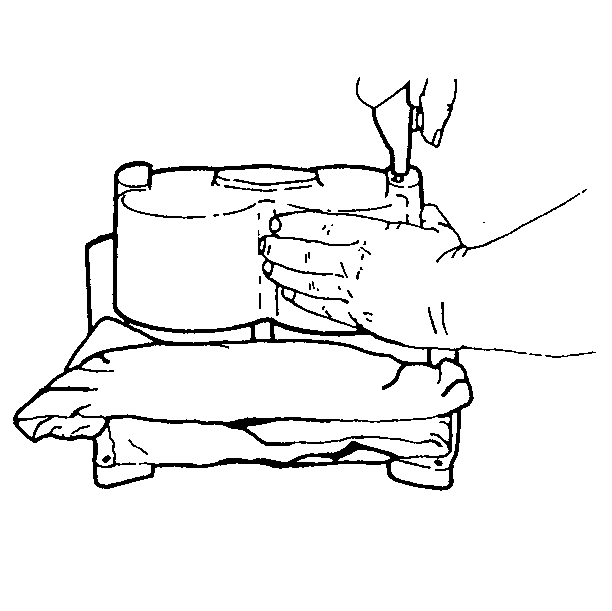
- Drain the brake fluid from the caliper.
Caution: Do not place your fingers in front of the piston in order
to catch or protect the piston while applying compressed air. This could result
in serious injury.
Notice: Use only enough air to ease the piston out of the bore. If the piston
is blown out, even with the padding, it can be damaged.
- Remove the pistons from the bore by directing compressed air into the
caliper fluid inlet.
| • | Pad the exterior of the caliper with a clean shop towel. |
| • | Use just enough air pressure to ease the pistons out of the bore. |
| • | If only one piston is blown loose, it may be necessary to reinsert
the piston part way and block it in position. Apply air pressure in order
to free the remaining piston. |
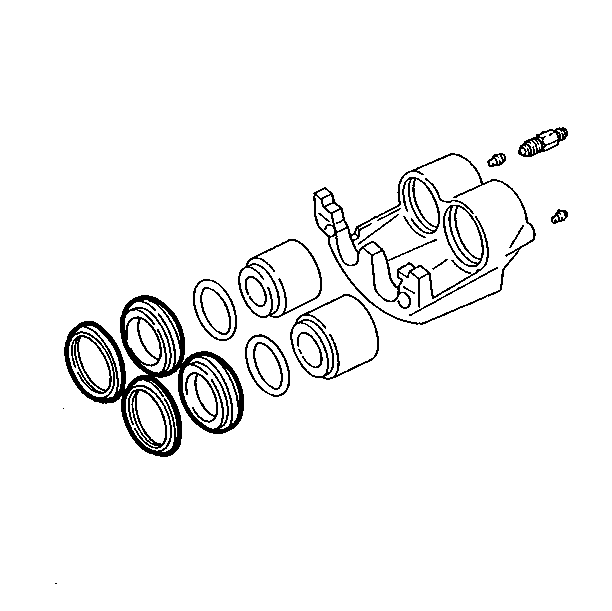
- Remove the heat shields and the dust boots.
Notice: Do not use a metal tool for seal removal. Damage to the caliper bore
or the seal grooves can result.
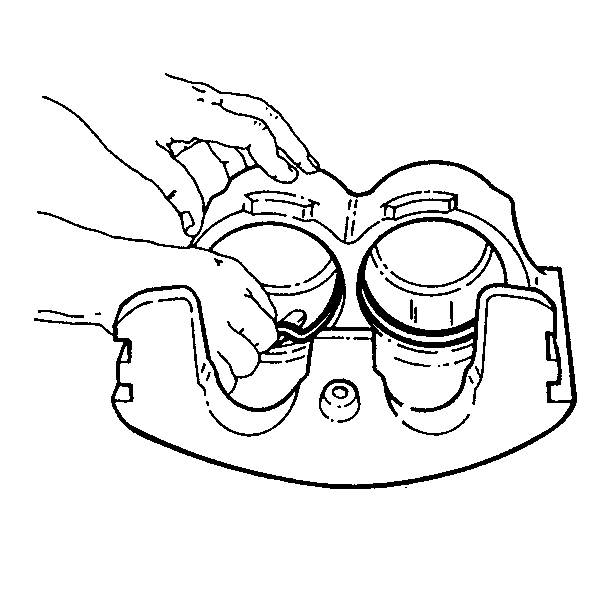
- Remove the piston seals from the groove in the
caliper bore using a pointed piece of wood or plastic.
- Remove the bleeder valve.
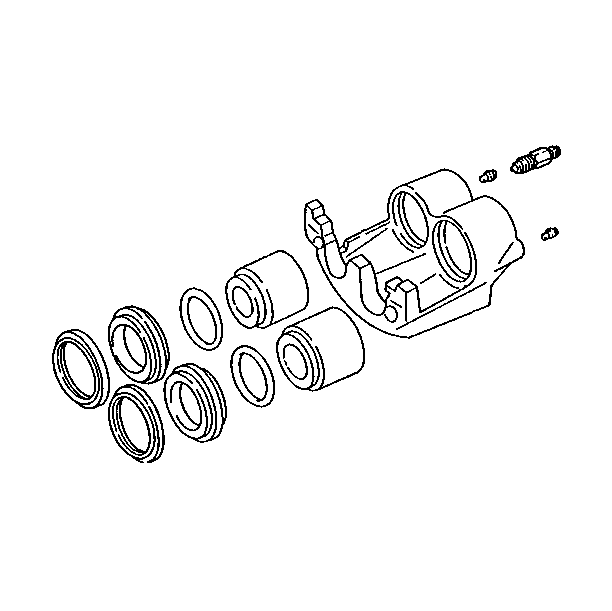
- Clean all parts in clean, denatured alcohol
or new brake fluid. Use dry, filtered, unlubricated, compressed air in order
to dry parts and blow out all passages in the caliper housing and the bleeder
screw valve.
- Clean the guideways with a wire brush.
- Inspect the surfaces of the guideways for rust or corrosion.
- Inspect the caliper housing for cracks or other damage. Replace
the caliper housing if necessary.
- Inspect the outside diameter of the pistons for scoring, nicks,
corrosion, wear or damage. Replace the piston if any surface defects are found.
Important: The OD of the piston is the primary sealing surface of the caliper and
is manufactured to very close tolerances. Refinishing by any means or the
use of abrasives is not acceptable.
The piston bore is not plated and stains or minor corrosion can be polished
out with crocus cloth. Do not use emery cloth or any form of abrasive. Clean
caliper housing after using crocus cloth. If the bore cannot be cleaned in
this manner, the caliper must be replaced.
- Inspect the caliper bore for scoring, nicks, corrosion, wear or
damage.
Installation Procedure
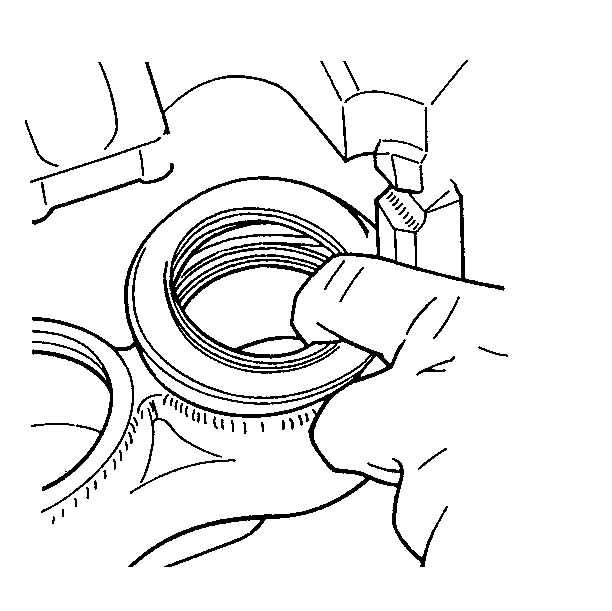
- Place the caliper housing on a clean work
bench with the open ends of the bores facing up.
- Install the new pistons in the piston bore seal groove.
| 2.1. | Dip the seal in clean brake fluid. |
| 2.2. | Lubricate the cylinder bore with clean brake fluid. |
| 2.3. | Make sure the seal is not twisted or rolled in the groove. |
- Install a new dust boot on the piston bore.
Use your finger in order to insert the boot in the bore recess.
- Install the piston through the boot and into the bore.
| • | The boot will slide onto the piston. |
| • | Make sure the boot seats evenly in the piston groove. |
| • | Use care when installing the pistons. Apply even force and rotate
the piston slightly in order to avoid cocking in the bore and dislodging the
piston seal. |
- Install a new heat shield on the piston and insert the three tabs
in the boot groove.
- Install the bleeder valve.
Tighten
Tighten the bleeder valve to 14 N·m (124 lb in).
Notice: Use the correct fastener in the correct location. Replacement fasteners
must be the correct part number for that application. Fasteners requiring
replacement or fasteners requiring the use of thread locking compound or sealant
are identified in the service procedure. Do not use paints, lubricants, or
corrosion inhibitors on fasteners or fastener joint surfaces unless specified.
These coatings affect fastener torque and joint clamping force and may damage
the fastener. Use the correct tightening sequence and specifications when
installing fasteners in order to avoid damage to parts and systems.










